1.
Introduction and preliminaries
We are interested to discuss about the existence of positive solutions of the following infinite coupled system of (n−1,n)-type semipositone boundary value problems (BVPs) of nonlinear fractional differential equations (IBVP for short) in the sequence space of weighted means c0(W1,W2,Δ)
where n≥3, α∈(n−1,n], η,ζ are real numbers, 0<η<α, Dα0+ is the Riemann-Liouville's (R-L's) fractional derivative, and fi,gi, i=1,2,…, are continuous and sign-changing. This kind of problems that the nonlinearity in (1.1) may change signs is mentioned as semipositone problems in the literature.
Fractional differential equations (FDEs) occur in the various fields of biology [16], economy [20,38], engineering [24,32], physical phenomena [5,7,8,16,25], applied science, and many other fields [3,9,14,21]. Hristova and Tersian [18] solved an FDE with a different strategy, and Harjani, Lˊopez, and Sadarangani [17] solved an FDE using a fixed point approach. Now, we intend to solve an FDE by using the technique of measure of noncompactness. On the other hand, we encounter many real world problems, which can be modeled and described using infinite systems of FDEs (see [4,27,34,36,37]). In the theory of infinite system of FDEs, the measure of noncompactness (MNC) plays a significant role, which was introduced by Kuratowski [23] (see recent works [27,35,36]). The MNC has been utilized in sequence spaces for various classes of differential equations, see [2,6,11,12,13,26,29,30,35,36].
The difference sequence spaces of weighted means λ(u,v,Δ) (λ=c0,c, and l∞) first have been introduced in [33]. Thereafter, Mursaleen et al. [28] constructed some estimations for the Hausdorff MNC of some matrix operators on these spaces. They also determined several classes of compact operators in such spaces. Motivated by the mentioned papers, in this work, we first discuss the existence of solutions of IBVP (1.1) in the difference sequence space of weighted means c0(W1,W2,Δ). Then, we find an interval of η such that for any η belongs to this interval, IBVP (1.1) has a positive solution. Eventually, we demonstrate an example illustrating the obtained results. Here, we preliminarily collect some definitions and auxiliary facts applied throughout this paper.
Suppose that (Λ,‖⋅‖) is a real Banach space containing zero element. We mean by D(z,r) the closed ball centered at z with radius r. For a nonempty subset U of Λ, the symbol ¯U denotes the closure of U and the symbol ConvU denotes the closed convex hull of U. We denote by MΛ the family of all nonempty, bounded subsets of Λ and by NΛ the family consisting of nonempty relatively compact subsets of Λ.
Definition 1.1. [1] The function ˜μ:MΛ→[0,+∞) is called an MNC in Λ if for any U,V1,V2∈MΛ, the properties (i)–(v) hold:
(i) ker˜μ={U∈MΛ:˜μ(U)=0}≠∅ and ker˜μ⊆NΛ.
(ii) If V1⊂V2, then ˜μ(V1)≤˜μ(V2).
(iii) ˜μ(¯U)=˜μ(ConvU)=˜μ(U).
(iv) For each ρ∈[0,1], ˜μ(ρU+(1−ρ)V)≤ρ˜μ(U)+(1−ρ)˜μ(V).
(v) If for each natural number n, Un is a closed set in MΛ, Un+1⊂Un, and limn→∞˜μ(Un)=0, then U∞=⋂∞n=1Un is nonempty.
In what follows, we mean by MY, the family of bounded subsets of the metric space (Y,d).
Definition 1.2. [10] Suppose that (Y,d) is a metric space. Also, suppose that P∈MY. The Kuratowski MNC of P, which is denoted by α(P), is the infimum of the set of positive real numbers ε such that P can be covered by a finite number of sets of diameter less than to ε. Indeed,
when diam(Kj)=sup{d(ς,ν):ς,ν∈Kj}.
The Hausdorff MNC (ball MNC) of the bounded set P, which is denoted by χ(P), is defined by
Here, we quote a result contained in [10].
Lemma 1.3. Let (Y,d) be a metric space and let P,P1,P2∈MY. Then
(i) β(P)=0 if and only if P is totally bounded,
(ii) P1⊂P2⇒β(P1)≤β(P2),
(iii) β(¯P)=β(P),
(iv) β(P1∪P2)=max{β(P1),β(P2)}.
Besides, if Y is a normed space, then
(v) β(P1+P2)≤β(P1)+β(P2),
(vi) for each complex number ρ, β(ρP)=|ρ|β(P).
Now, we state a version of Darbo's theorem [10], which is fundamental in our work.
Theorem 1.4. [10] Suppose that ˜μ is an MNC in a Banach space Λ. Also, suppose that ∅≠D⊆Λ is a bounded, closed, and convex set and that S:D→D is a continuous mapping. If a constant κ∈[0,1) exists such that
for any nonempty subset X of D, then S has a fixed point in the set D.
Suppose that J=[0,s] and that Λ is a Banach space. Consider the Banach space C(J,Λ) with the norm
Proposition 1.5. [10] Suppose that Ω⊆C(J,Λ) is equicontinuous and bounded. Then ˜μ(Ω(⋅)) is continuous on J and
Definition 1.6. (see [22,31]) Suppose that f:(0,∞)→R is a continuous function. The R-L's fractional derivative of order ℓ (ℓ>0) is defined as
when n=[ℓ]+1 and the right-hand side is pointwise defined on (0,+∞).
We terminate this section by describing the unique solution of a nonlinear FDE, which will be needed later.
Lemma 1.7. [39] Let h∈C[0,1]. Then the BVP
has a unique solution
when H(ρ,ϱ) is the Green's function of BVP (1.2) defined as
The function H(ρ,ϱ) has the following properties:
where M0=(ℓ−ζ)(ℓ−1)+ℓ+ζ and q(ϱ)=ϱ(1−ϱ)ℓ−1(ℓ−ζ)Γ(ℓ).
2.
Difference sequence space of weighted means c0(W1,W2,Δ)
Suppose that S is the space of complex or real sequences. Any vector subspace of S is said to be a sequence space. We denote by c the space of convergent sequences and by c0 the space of null sequences.
A complete linear metric sequence space is called an FK space if it has the property that convergence implies coordinatewise convergence. Moreover, a normed FK space is called a BK space. It is known the spaces c0 and c are BK spaces with the norm ‖z‖∞=supk∈N|zk| (see [12]).
Suppose that X and Y are sequence spaces. We denote by (X,Y) the class of infinite matrices B that map X into Y. We denote by B=(bmk)∞m,k=0 an infinite complex matrix and by Bm its mth row. Then we can write
Thus B∈(X,Y) if and only if Bm(x) converges for all m and all x∈X and B(x)∈Y.
The set
is called the matrix domain of B in X; see [19]. An infinite matrix Y=(ynl) is said to be a triangle if ynn≠0 and ynl=0 for each l>n. The matrix domain of a triangle Y, XY, shares many properties with the sequence space X. For instance, if X is a BK space, then XY is a BK space with the norm ‖Z‖XY=‖YZ‖X for each Z∈XY; see [15].
Now, let W=(wk) be a sequence. The difference sequence of W is denoted by ΔW=(wk−wk−1). Suppose that W1=(w1k) and W2=(w2k) are the sequences of real numbers such that w1k≠0 and w2k≠0 for all k. Also, consider the triangle Y=(ynl) defined by
The difference sequence space of weighted means c0(W1,W2,Δ) is defined as the matrix domain of the triangle Y in the space c0. Evidently, c0(W1,W2,Δ) is a BK space with the norm defined by
Now, we describe the Hausdorff MNC χ in the space c0(W1,W2,Δ). For this purpose, we quote the following two theorems.
Theorem 2.1. [26] Suppose that P∈Mc0. Also, suppose that Pm:c0→c0 is the operator defined by Pm(z)=(z0,z1,…,zm,0,0,…). Then
when I is the identity operator.
Theorem 2.2. [19] Let X be a normed sequence space. Also, let χY and χ denote the Hausdorff MNC on MXY and MX, the family of bounded sets in XY and X, respectively. Then
where P∈MXY.
Combining these two facts gives us the following theorem.
Theorem 2.3. Let P∈Mc0(W1,W2,Δ). Then the Hausdorff MNC χ on the space c0(W1,W2,Δ) can be defined as the following form:
3.
Main results
In this section, we first make some sufficient conditions to discuss the existence of solutions of IBVP (1.1) in the space c0(W1,W2,Δ). Then, we give an interval of η such that any η belongs to this interval and the infinite system (1.1) has a positive solution. Eventually, we demonstrate an example to present the effectiveness of the obtained result.
Here, we consider some assumptions.
(A1) Let J1=[0,1], let fi,gi∈C(J1×R∞,R), and let the function K:J1×C(J1,c0(W1,W2,Δ))×C(J1,c0(W1,W2,Δ))→c0(W1,W2,Δ)×c0(W1,W2,Δ) be defined by
such that the family of functions (K(U,V)(ϱ)) is equicontinuous at each point of the space C(J1,c0(W1,W2,Δ))×C(J1,c0(W1,W2,Δ)).
(A2) For each k∈N and U=(ui)∈C(J1,c0(W1,W2,Δ)), the following inequalities hold:
where pk,qk:J1→R+=[0,+∞) are mappings and the families {pk} and {qk} are equibounded.
(A3) Let fi, gi∈C(J1×R∞+,R) and let a function θ∈L1(J1,(0,+∞)) exist such that fi(ρ,Z(ρ))≥−θ(ρ) and gi(ρ,Z(ρ))≥−θ(ρ), for each i∈N, ρ∈J1, and nonnegative sequence (Z(ρ)) in c0(W1,W2,Δ).
(A4) For any i∈N and ρ∈J1, let fi(ρ,U0(ρ))>0, where U0(ρ)=(u0i(ρ)) and u0i(ρ)=0 for all i and all ρ. Also, the sequence (fi(ρ,U0(ρ))) is equibounded.
(A5) There exists σ>0 such that gi(ρ,Z(ρ))>0, where i∈N and (ρ,Z(ρ))∈J1×([0,σ])∞. Put
and
Theorem 3.1. Assume that IBVP (1.1) fulfills the hypotheses (A1), (A2) and M0|η|(α−ζ)Γ(α)(Q+P)<1, then it has at least one solution.
Proof. Let (U,V)=((ui),(vi)) be in C(J1,c0(W1,W2,Δ))×C(J1,c0(W1,W2,Δ)) and satisfy the initial conditions of IBVP (1.1) and let each ui and vi be continuous on J1. We define the operator T:C(J1,c0(W1,W2,Δ))×C(J1,c0(W1,W2,Δ))→C(I,c0(W1,W2,Δ)×c0(W1,W2,Δ)) by
Note that the product space C(J1,c0(W1,W2,Δ))×C(J1,c0(W1,W2,Δ)) is equipped with the norm
for each (U,V)∈C(J1,c0(W1,W2,Δ))×C(J1,c0(W1,W2,Δ)). Then, using our assumptions for any ρ∈J1, we can write
Accordingly, we obtain
It implies that
Let r0 denote the optimal solution of inequality (3.1). Take
Clearly, D is bounded, closed, and convex and T is bounded on D. Now, we prove that T is continuous. Let (U1,V1) be a point in D and let ε be an arbitrary positive number. Employing assumption (A1), there exists δ>0 such that if (U2,V2)∈D and ‖(U1,V1)−(U2,V2)‖C(J1,c0(W1,W2,Δ))×C(J1,c0(W1,W2,Δ))≤δ, then
Therefore, for any ρ in I, we get
Accordingly, we get
Thus, F is continuous.
Next, we show that T(U,V) is continuous on the open interval (0,1). To this aim, let ρ1∈(0,1) and ε>0 be arbitrary. By applying the continuity of H(ρ,ϱ) with respect to ρ, we are able to find δ=δ(ρ1,ε)>0 such that if |ρ−ρ1|<δ, then
We can write
Eventually, we are going to show that T:D→D fulfills the conditions of Theorem 1.4. Due to Proposition 1.5 and Theorem 2.3, for any nonempty subset X1×X2⊂D, we obtain
Using Theorem 1.4, we conclude that T has a fixed point in D, and hence IBVP (1.1) admits at least one solution in C(J1,c0(W1,W2,Δ))×C(J1,c0(W1,W2,Δ)).
We are now in a position to discuss about the existence of positive solutions of IBVP (1.1) in the space c0(W1,W2,Δ). To this end, consider the following IBVP
where
and K(ρ)=η∫10H(ρ,ϑ)θ(ϑ)dϑ, which is the solution of the BVP
We are going to show that there exists a solution (x,y)=((xi),(yi)) for IBVP (1.1) with xi(ρ)≥K(ρ) and yi(ρ)≥K(ρ) for each i∈N and for each ρ∈[0,1].
Accordingly, (U,V) is a nonnegative solution of IBVP (1.1), where U(ρ)=(xi(ρ)−K(ρ)) and V(ρ)=(yi(ρ)−K(ρ)). Indeed, for any i∈N and each ρ∈(0,1), we have
It implies that
Therefore, we concentrate our attention to the study of IBVP (3.2). We know that (3.2) is equal to
In view of (3.3), we get
In what follows, we demonstrate our main result.
Theorem 3.2. Assume that IBVP (1.1) fulfills the hypotheses (A1)–(A5) and M0|η|(α−ζ)Γ(α)(Q+P)<1. Then there exists a positive real constant ˜η such that for each 0<η≤˜η, IBVP (1.1) has at least one positive solution.
Proof. Take any δ∈(0,1). Regarding assumptions (A4) and (A5), we are able to find 0<ε<min{1,σ} such that for each i∈N, ρ∈J1 and the nonnegative sequence Z in C(J1,c0(W1,W2,Δ)) with ‖Z‖C(J1,c0(W1,W2,Δ))<ε, we have
Suppose that
where ˜f(ε)=max{fi(ρ,Z(ρ))+θ(ρ),i∈N, 0≤ρ≤1, 0≤‖Z‖C(J1,c0(W1,W2,Δ))≤ε} and Υ=∫10M0q(ϑ)dϑ. Since limς→0˜f(ς)ς=+∞ and ˜f(ε)ε<12Υη, then there exists R0∈(0,ε) such that ˜f(R0)R0=12Υη. Let
Now, for any x∈D0 and ρ∈J1, we have
Thus, using (3.4), we deduce that
for any ρ∈J1, and any i∈N.
Thanks to relation (3.3), we get
for any ρ∈J1.
Thus, if 0<η≤˜η, then (x,y) is a positive solution of IBVP (3.2) with xi(ρ)≥K(ρ) and yi(ρ)≥K(ρ) for each i∈N and for each ρ∈J1.
Let U(ρ)=(ui(ρ))=(xi(ρ)−K(ρ)) and let V(ρ)=(vi(ρ))=(yi(ρ)−K(ρ)). Then (U,V) is a nonnegative solution of IBVP (1.1).
Example 3.3. Consider the following IBVP of FDEs
in the space C(J1,c0(W1,W2,Δ))×C(J1,c0(W1,W2,Δ)). By taking α=392, η=140, ζ=19.4,
and
system (3.5) is a special case of IBVP (1.1). Clearly, fi,gi∈C(J1×R∞+,R) for each i∈N. It can be easily verified that condition (A1) holds. Indeed, suppose that (U,V),(U1,V1)∈C(J1,c0(W1,W2,Δ))×C(J1,c0(W1,W2,Δ)) and that ε>0 is arbitrary. Now if ‖(U,V)−(U1,V1)‖C(J1,c0(W1,W2,Δ))×C(J1,c0(W1,W2,Δ))≤6επ2+12π, then for each ρ∈[0,1], we obtain
Also, we get
For each natural number i and ρ∈[0,1], we put pi(ρ)=π and qi(ρ)=π29. Thus (pi(ρ)) and (qi(ρ)) are equibounded on the interval I. Moreover, P=π and Q=π29. Note that
where θ(ρ)=tan(ρ) for each ρ∈I. Evidently, fi(ρ,U0(ρ))>0, the sequence (fi(ρ,U0(ρ))) is equibounded, and gi(ρ,U(ρ))>0. Moreover, M0|η|(α−ζ)Γ(α)(P+Q)=101.875×√π18.5×17.5×⋯×1.5×9<1. Therefore, we conclude from Theorem 3.2 that (3.5) has a positive solution (U,V) in the space C(J1,c0(W1,W2,Δ))×C(J1,c0(W1,W2,Δ)).
4.
Conclusions
Mursaleen et al. [28] constructed a measure of noncompactness in the difference sequence space of weighted means λ(u,v,Δ). Also, a fractional differential equation was studied by Yuan [39]. Now, in this work, we discuss the existence of solutions of the infinite coupled system of (n−1,n)-type semipositone boundary value problem of nonlinear fractional differential Eq (1.1) in the difference sequence space of weighted means c0(W1,W2,Δ).
Acknowledgments
We would like to thank the referees for their useful comments and suggestions which have significantly improved the paper.
Conflict of interest
The authors declare that they have no conflict of interest.











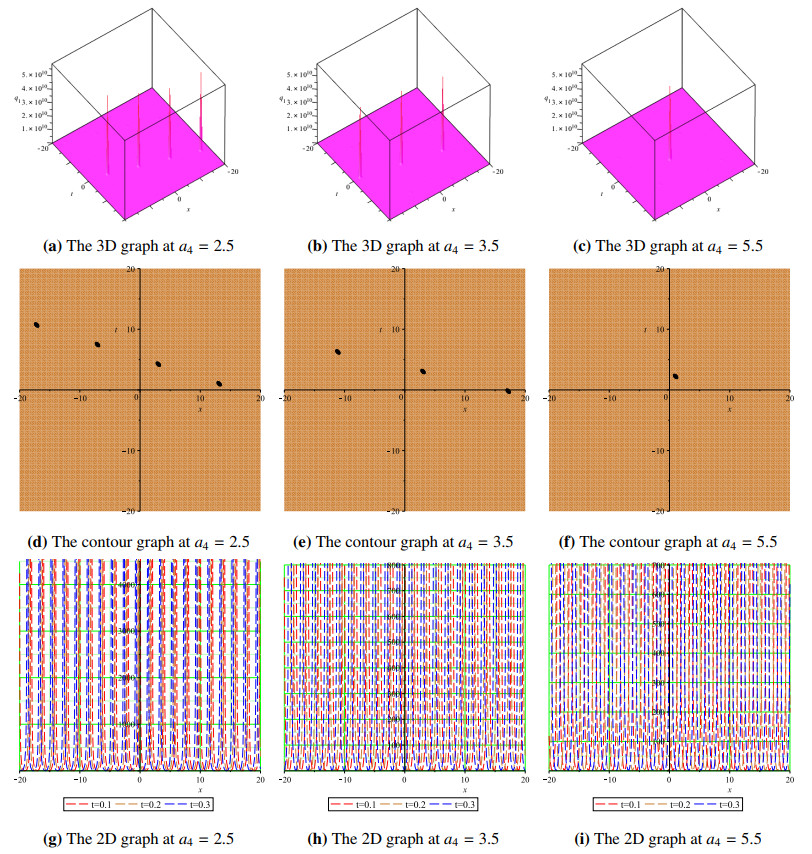
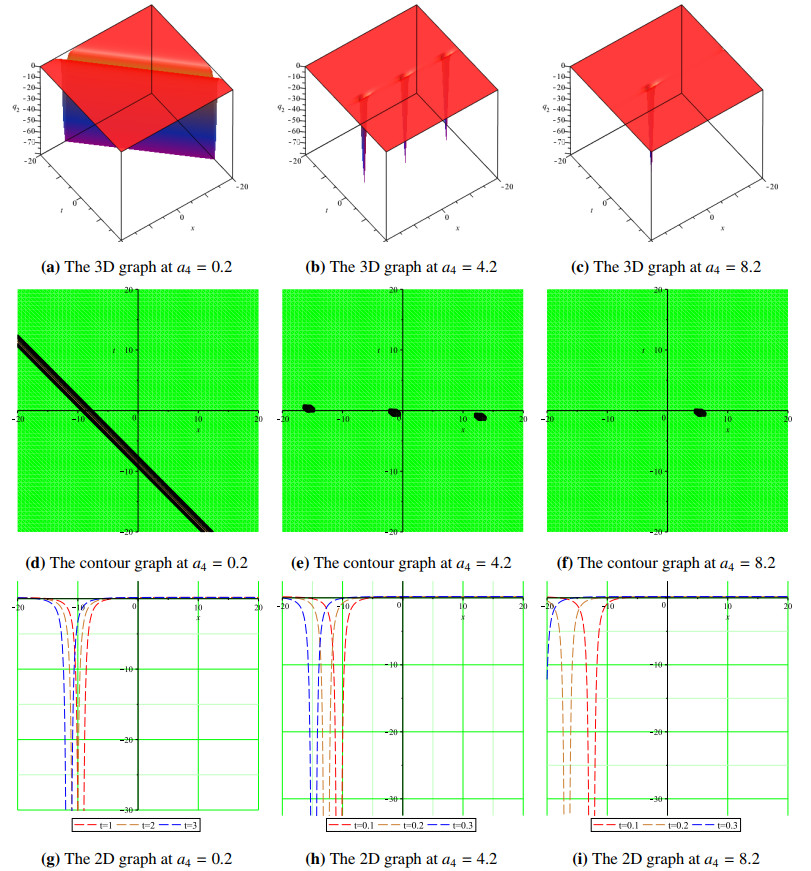
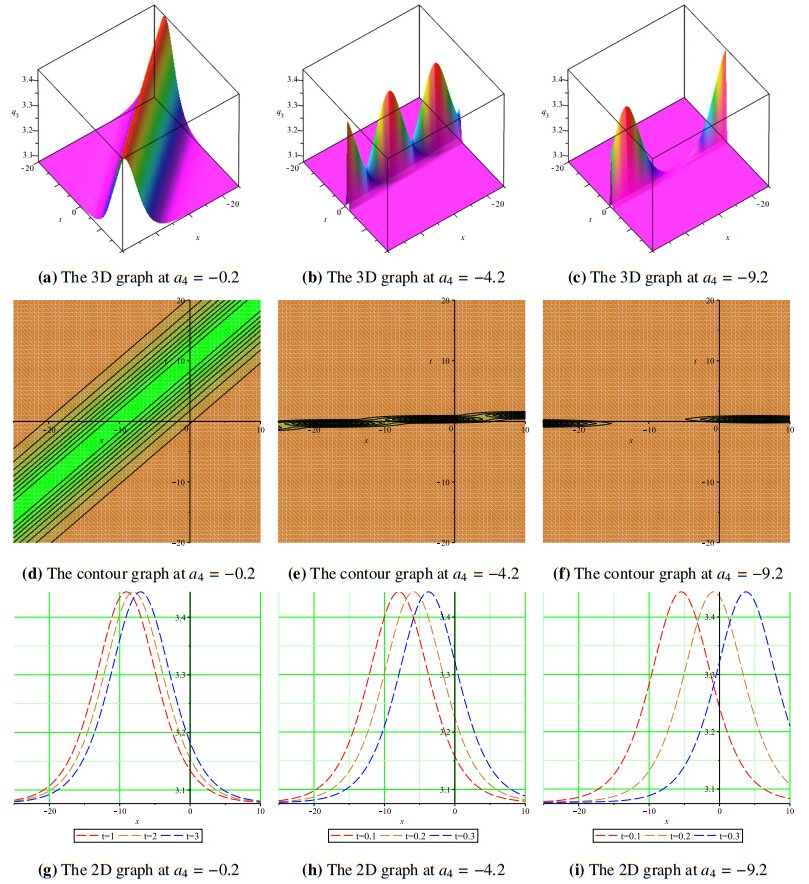
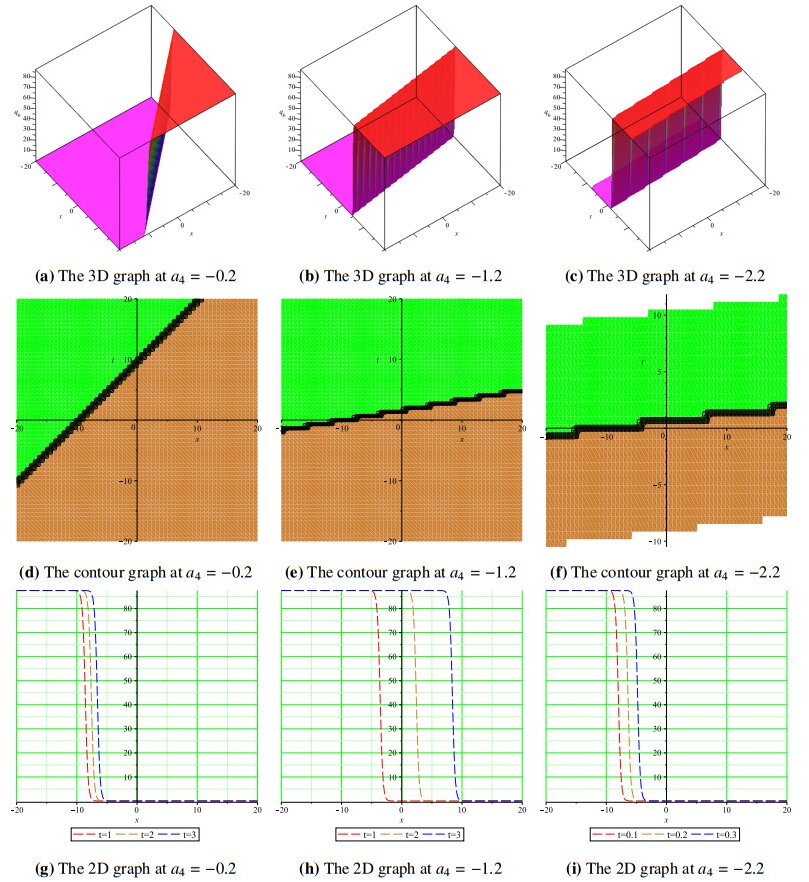
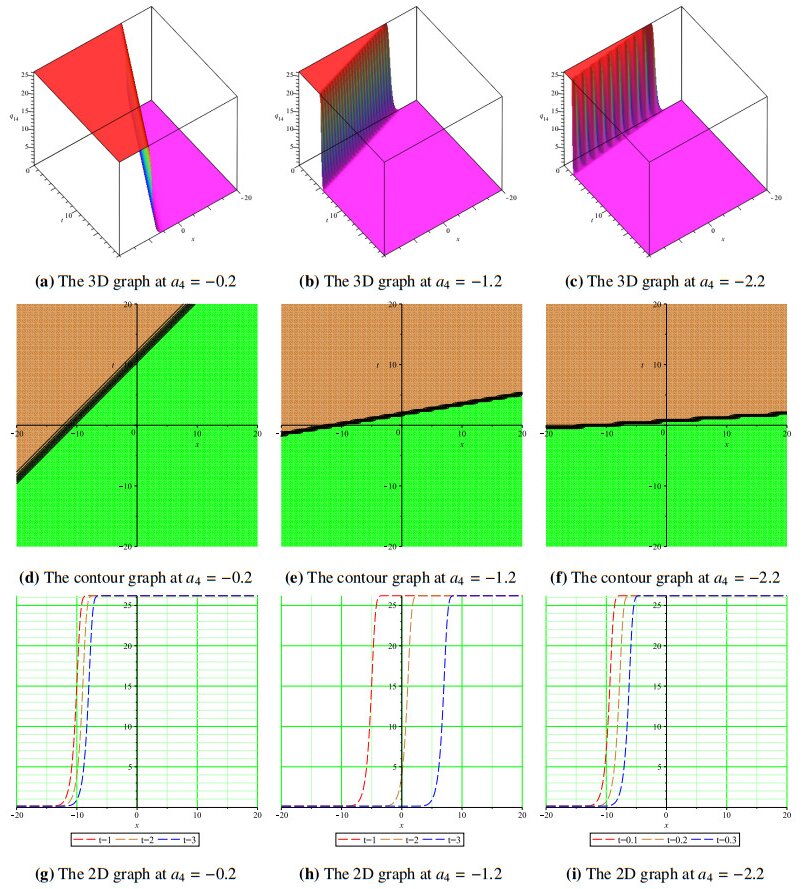
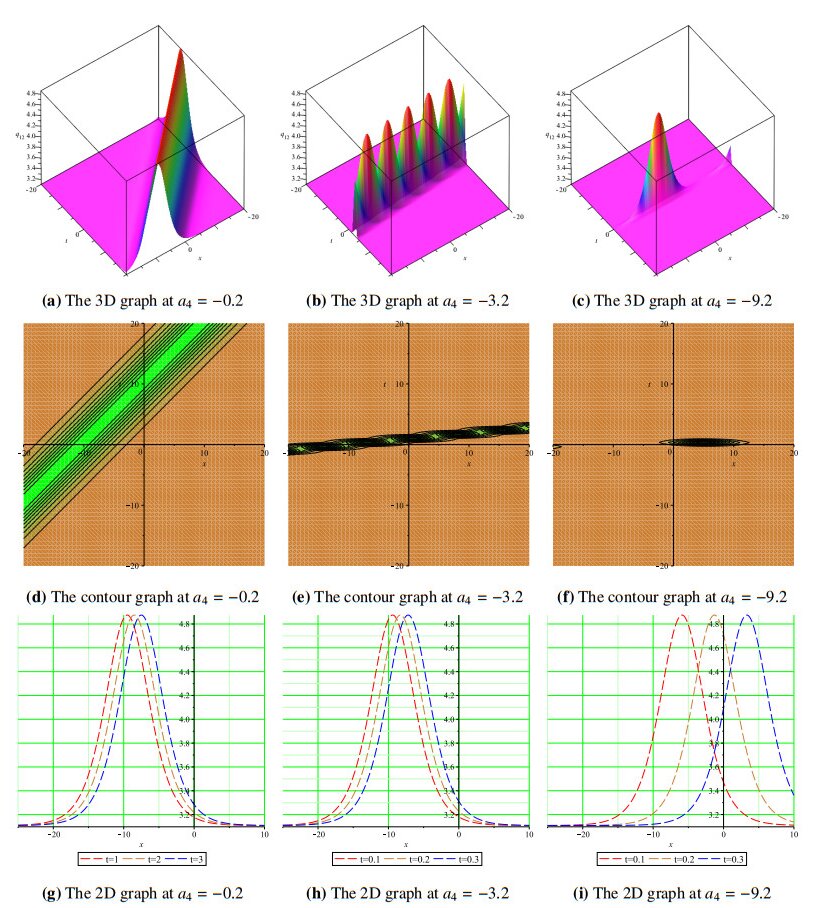
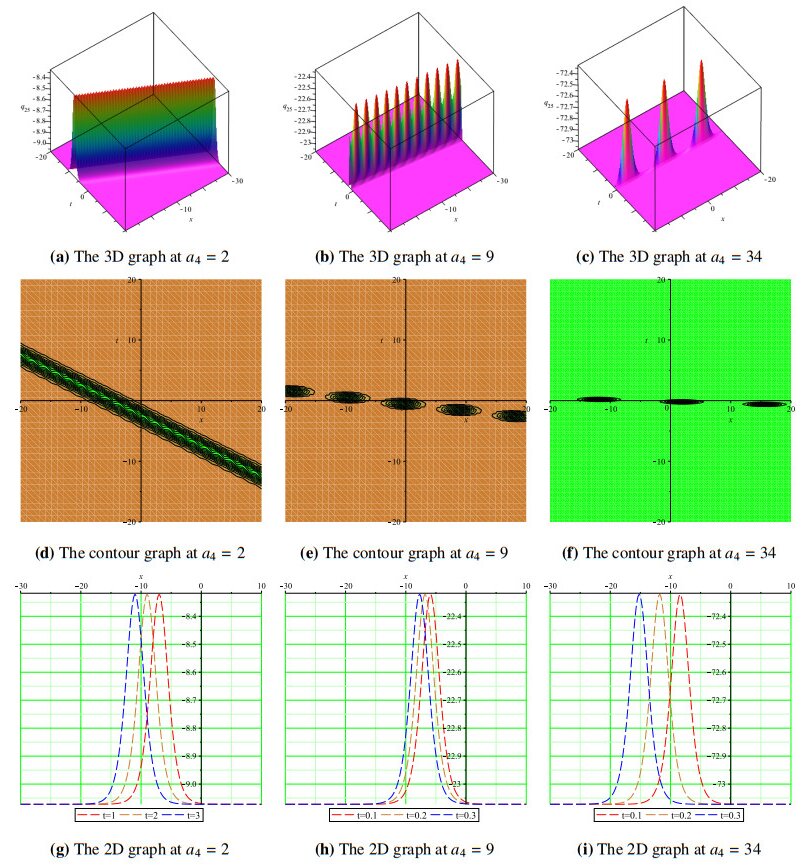
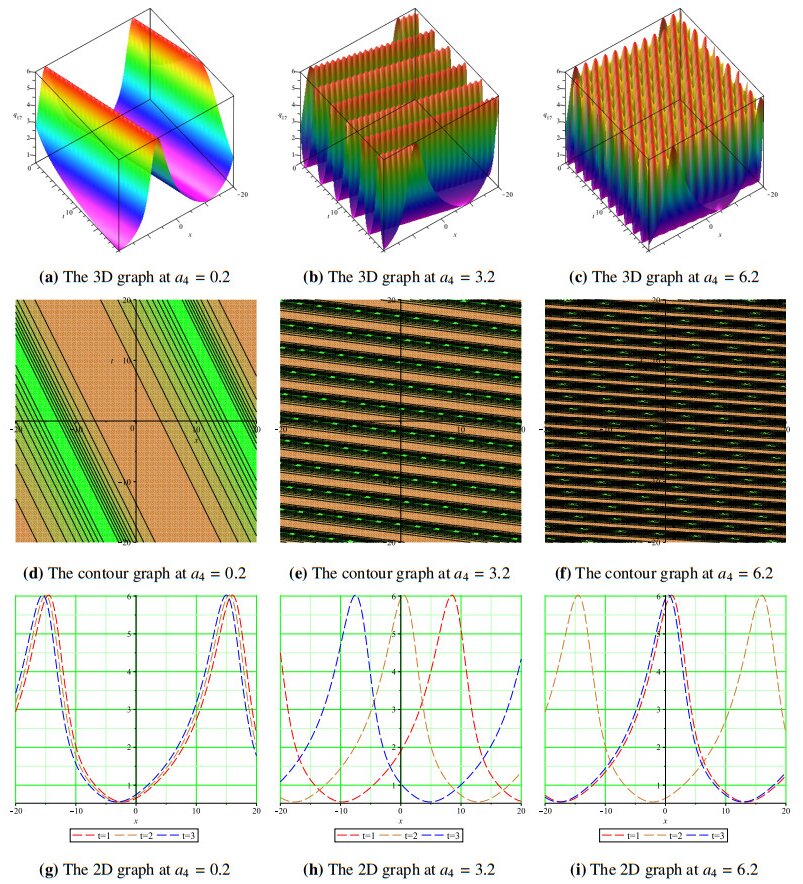
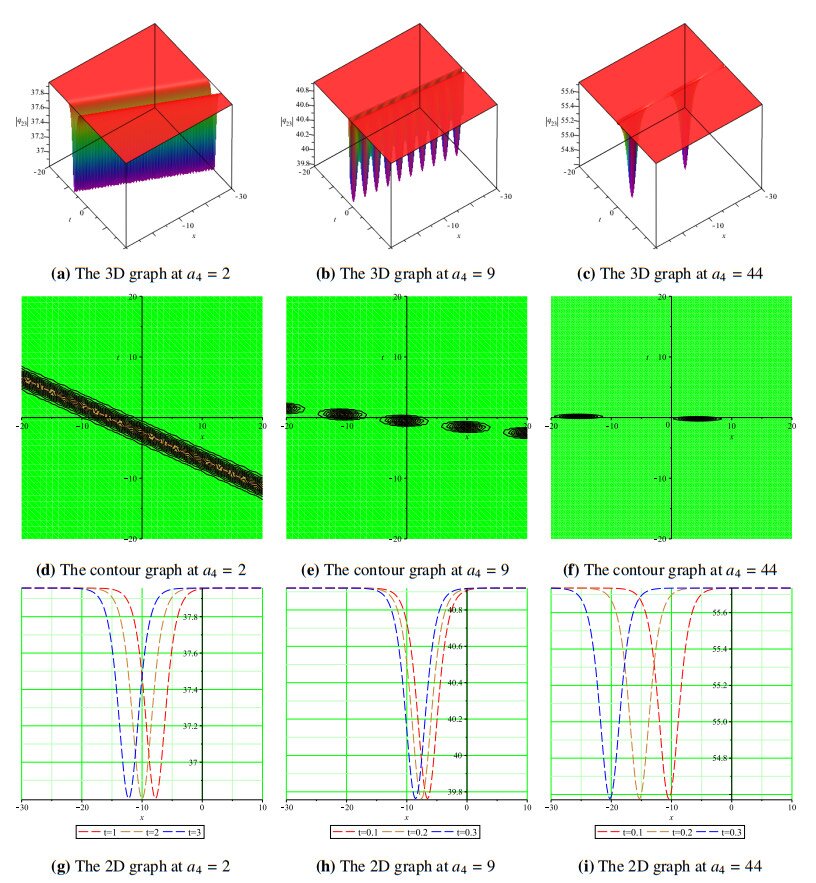


 DownLoad:
DownLoad: